[juskim] wanted to build a tiny mouse, but it couldn’t just be any mouse. It had to be a high-tech gaming mouse that could compete with the best on raw performance. The results are impressive, even if the final build is perhaps less than ideal for pro-level gameplay.
The build riffs on an earlier build from [juskim] that used little more than a PCB and a 3D-printed housing to make a barebones skeleton mouse. However, this one ups the sophistication level. At the heart of the build is the nRF54L15 microcontroller, which is paired with a PAW3395 mouse sensor which is commonly used in high-end gaming mice. It offers resolution up to 26K DPI for accurate tracking, speeds up to 650 ips, and 8 kHz sampling rates. Long story short, if you want fine twitch control, this is the sensor you’re looking for. The sensor and microcontroller are laced together on a custom PCB with a couple of buttons, a battery, and a charging circuit, and installed in a barebones 3D-printed housing to make the final build as small as possible.
The only real thing letting the design down is the mouse’s key feature—the size. There’s very little body to grab on to and it’s hard to imagine being able to play most fast-paced games at a high level with such a tiny device. Nevertheless, the specs are hardcore and capable, even if the enclosure isn’t.
[juskim] loves building tiny peripherals; we’ve featured his fine work before, too. Video after the break.
Continue reading “Smallest Gaming Mouse Has Crazy Fast Polling Rate And Resolution”


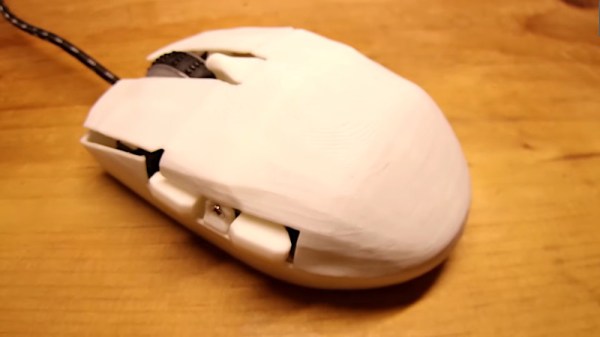


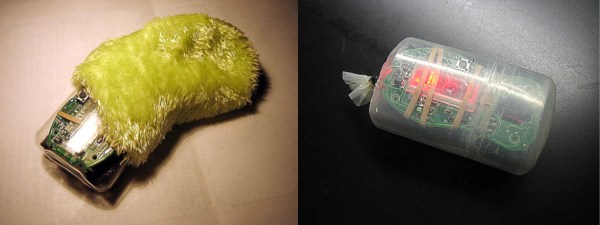
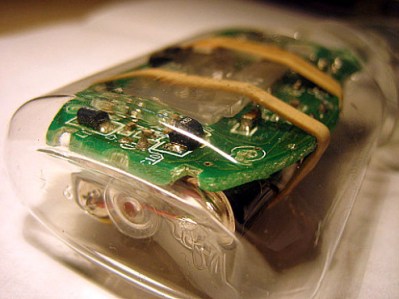
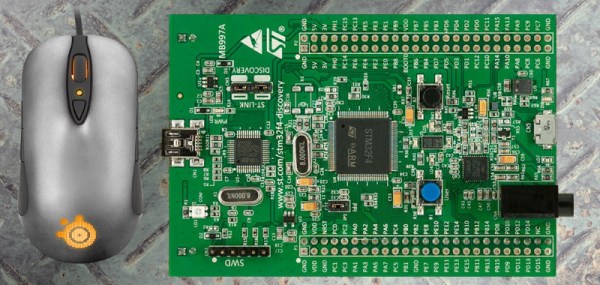
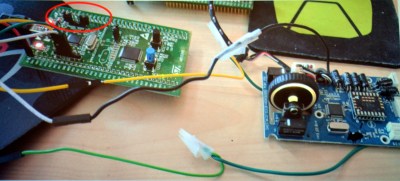 The
The 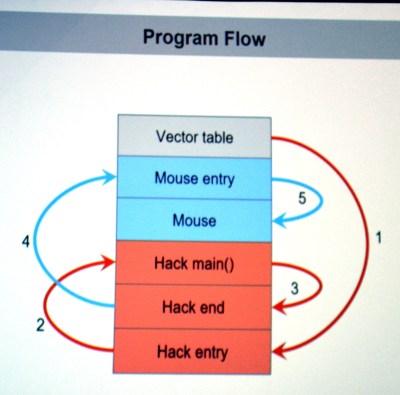 They first looked through the binary for a large block of zero values signifying unused space in flash. The injected firmware is designed to enumerate as a USB keyboard, open Notepad, then type out, save, and execute a PowerShell script before throwing back to the stock firmware (ensuring the mouse would still function as a mouse). Basically, this builds a
They first looked through the binary for a large block of zero values signifying unused space in flash. The injected firmware is designed to enumerate as a USB keyboard, open Notepad, then type out, save, and execute a PowerShell script before throwing back to the stock firmware (ensuring the mouse would still function as a mouse). Basically, this builds a 









